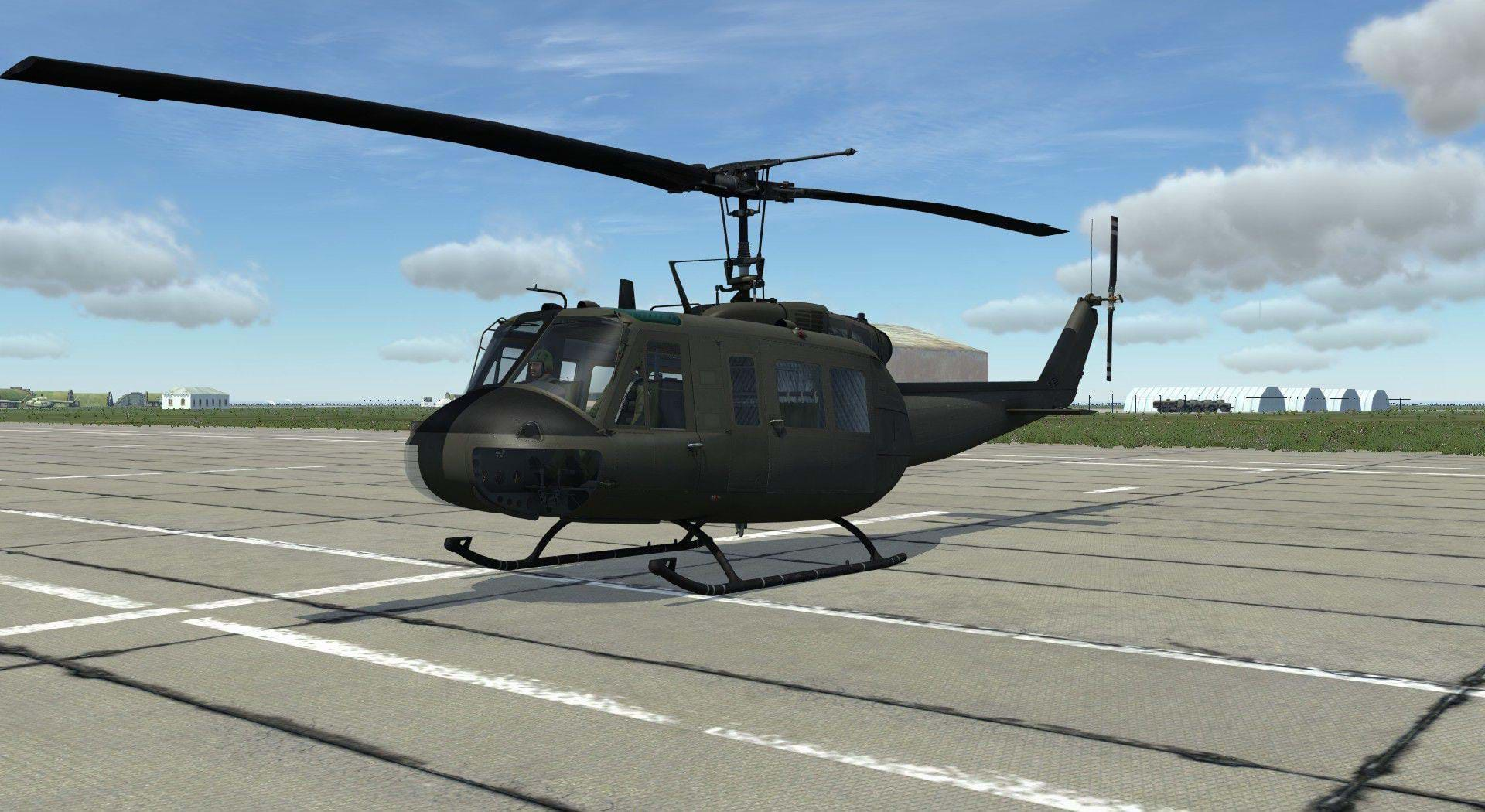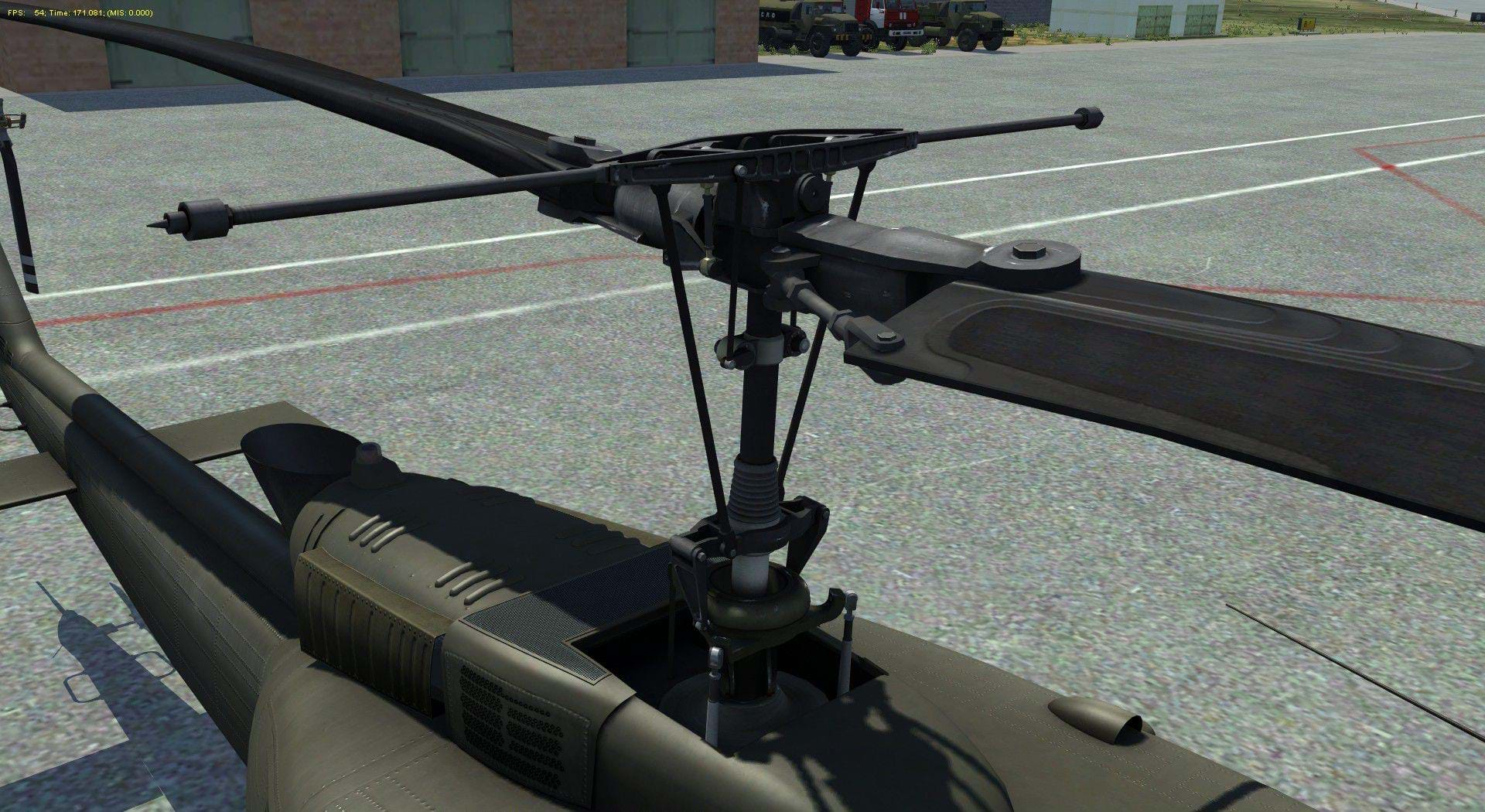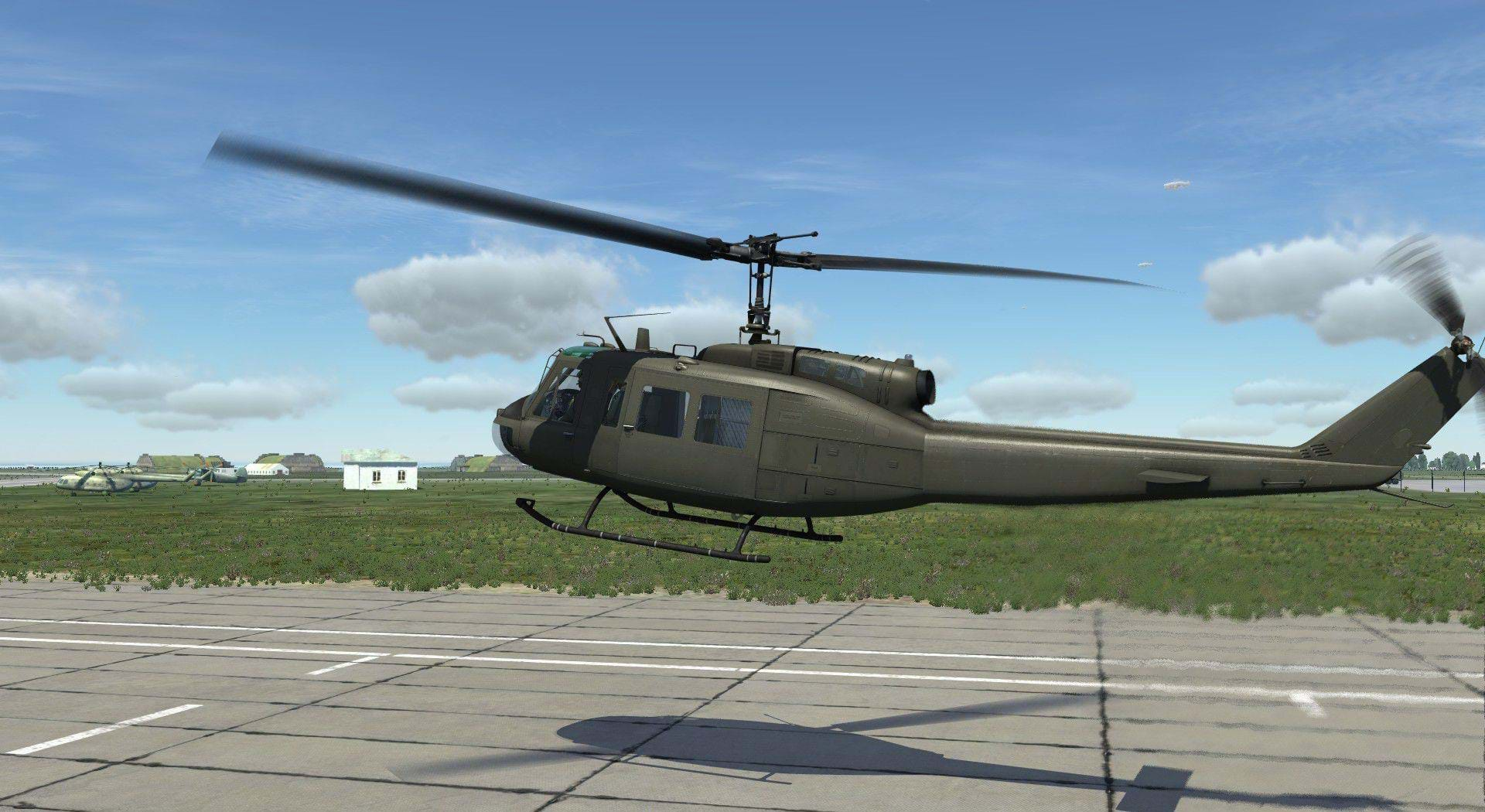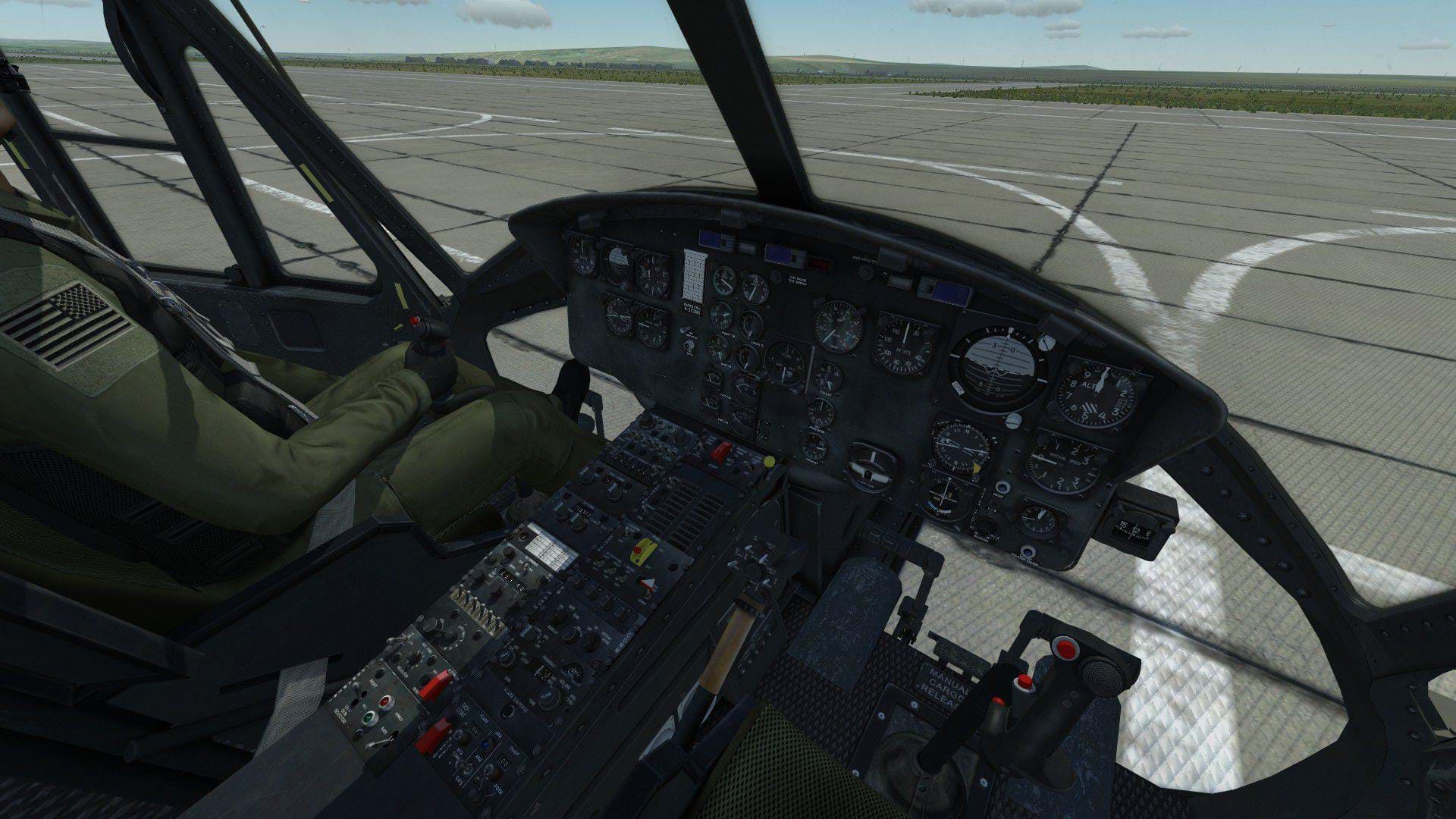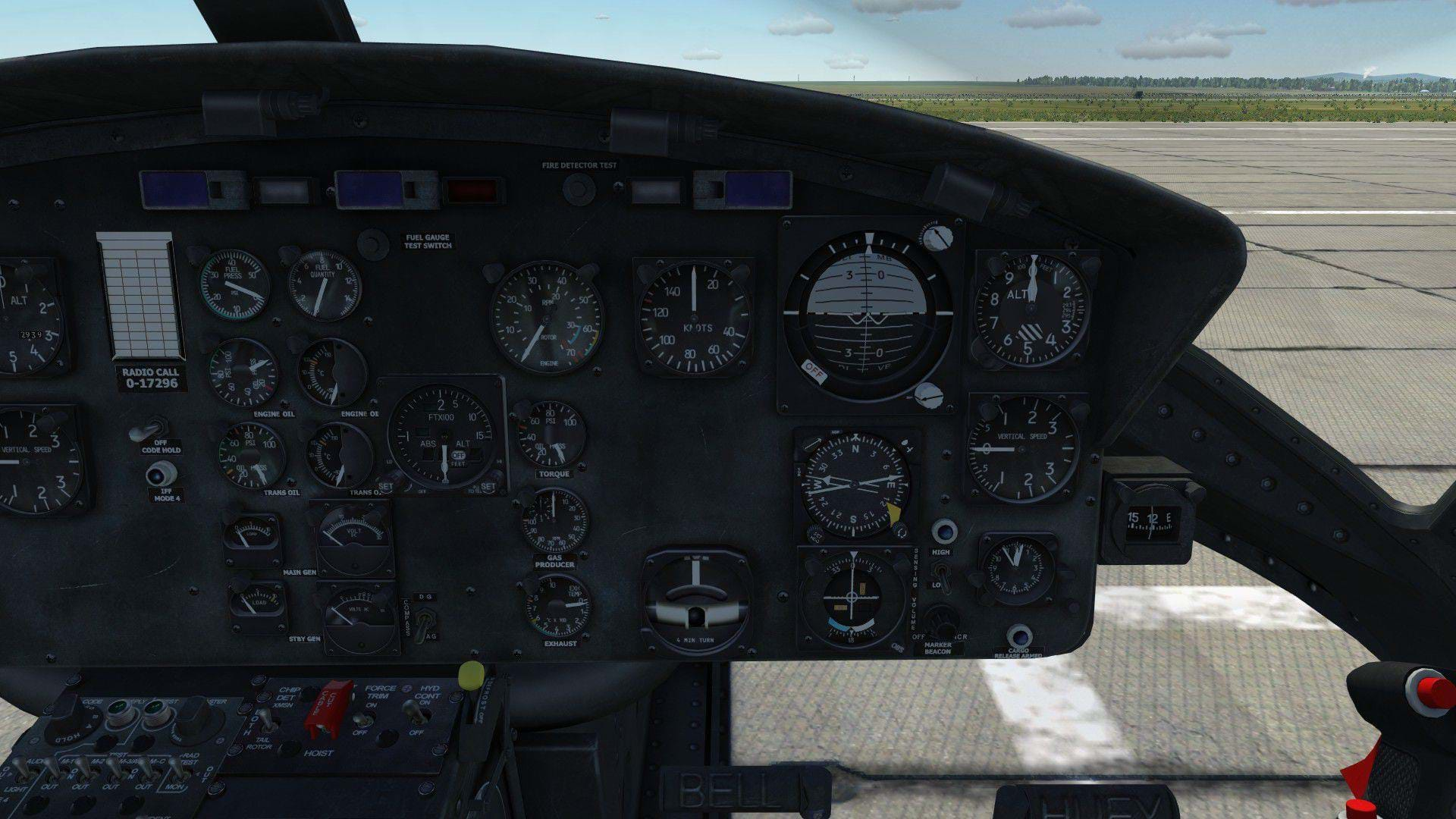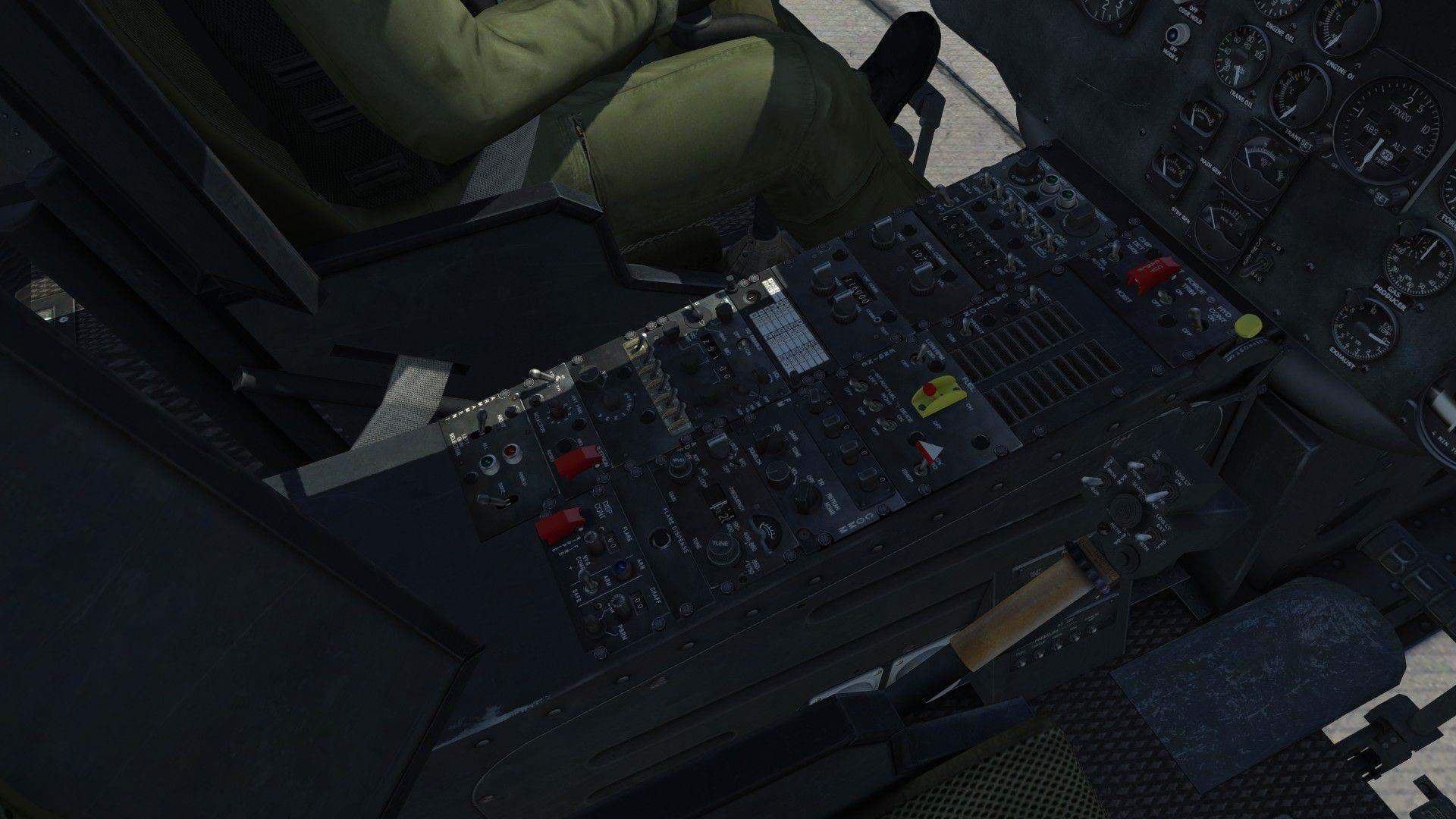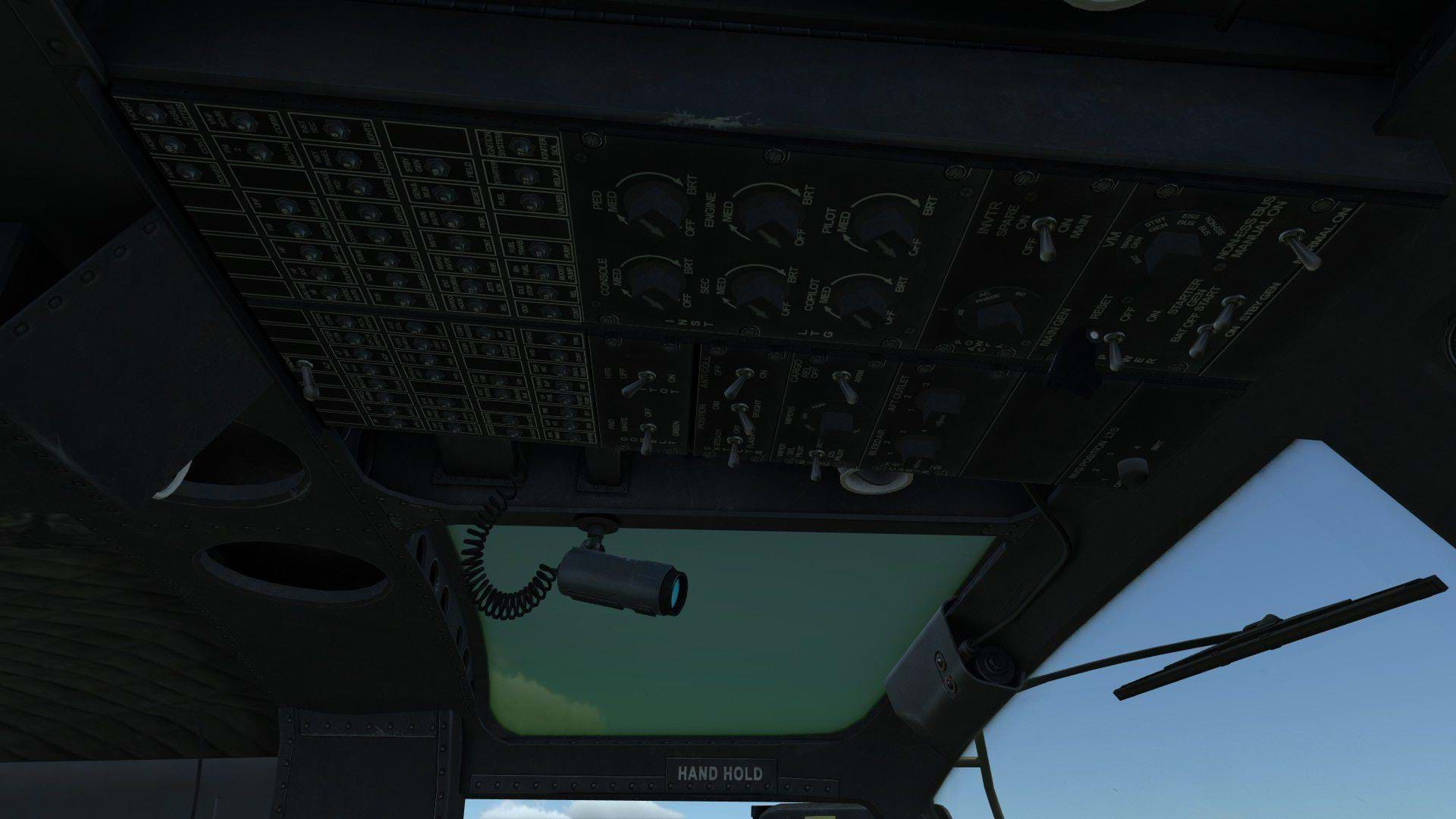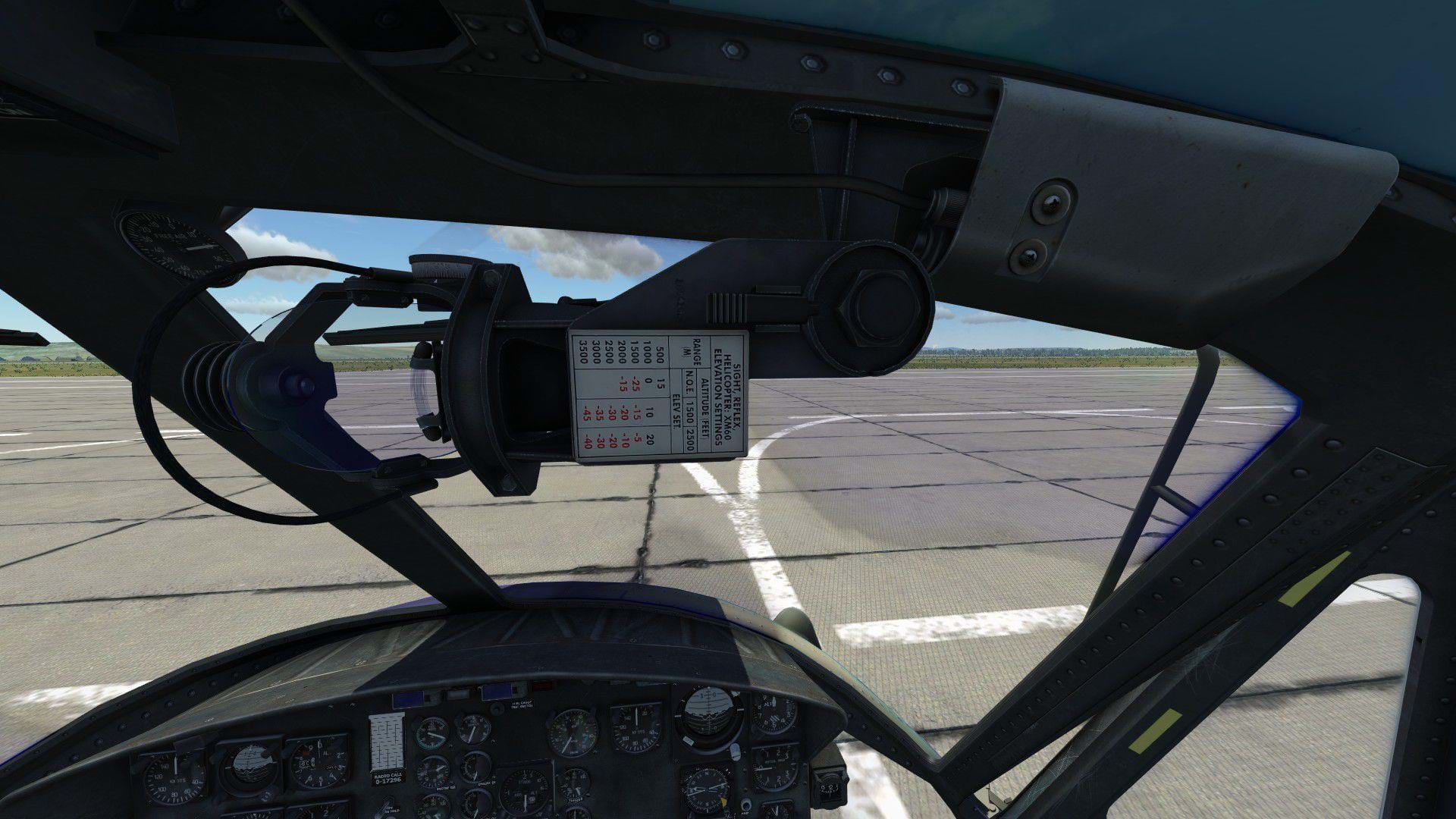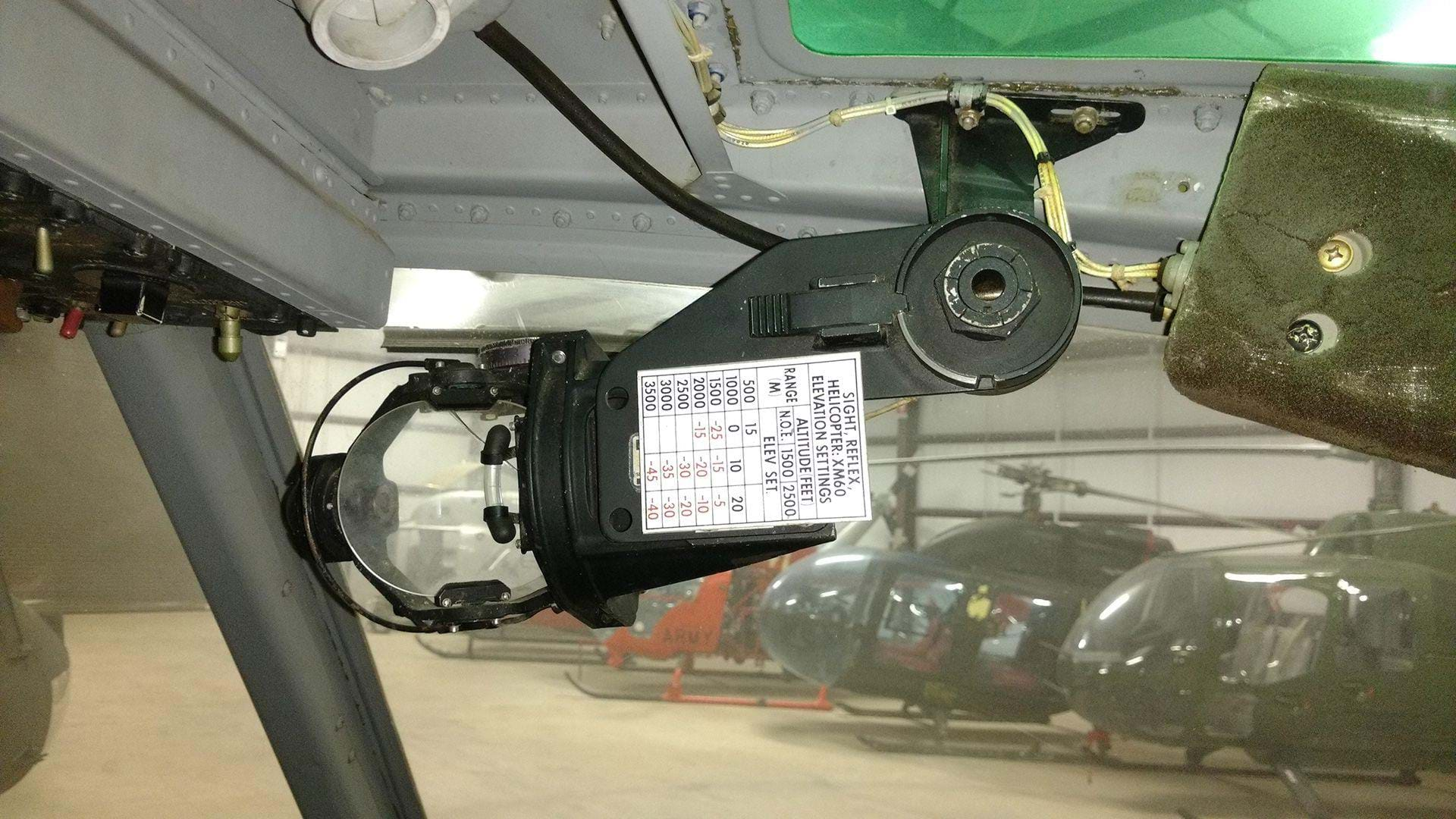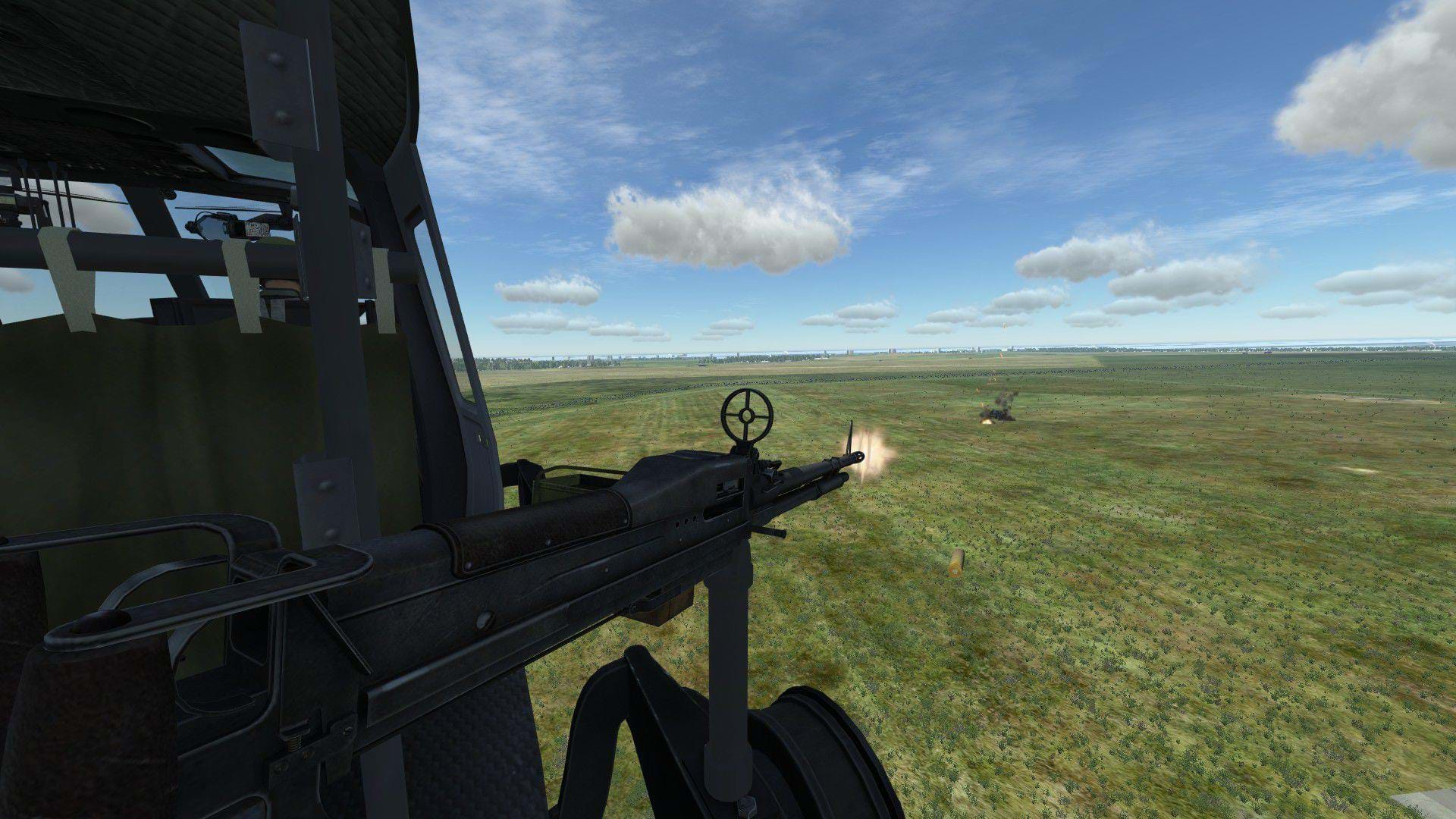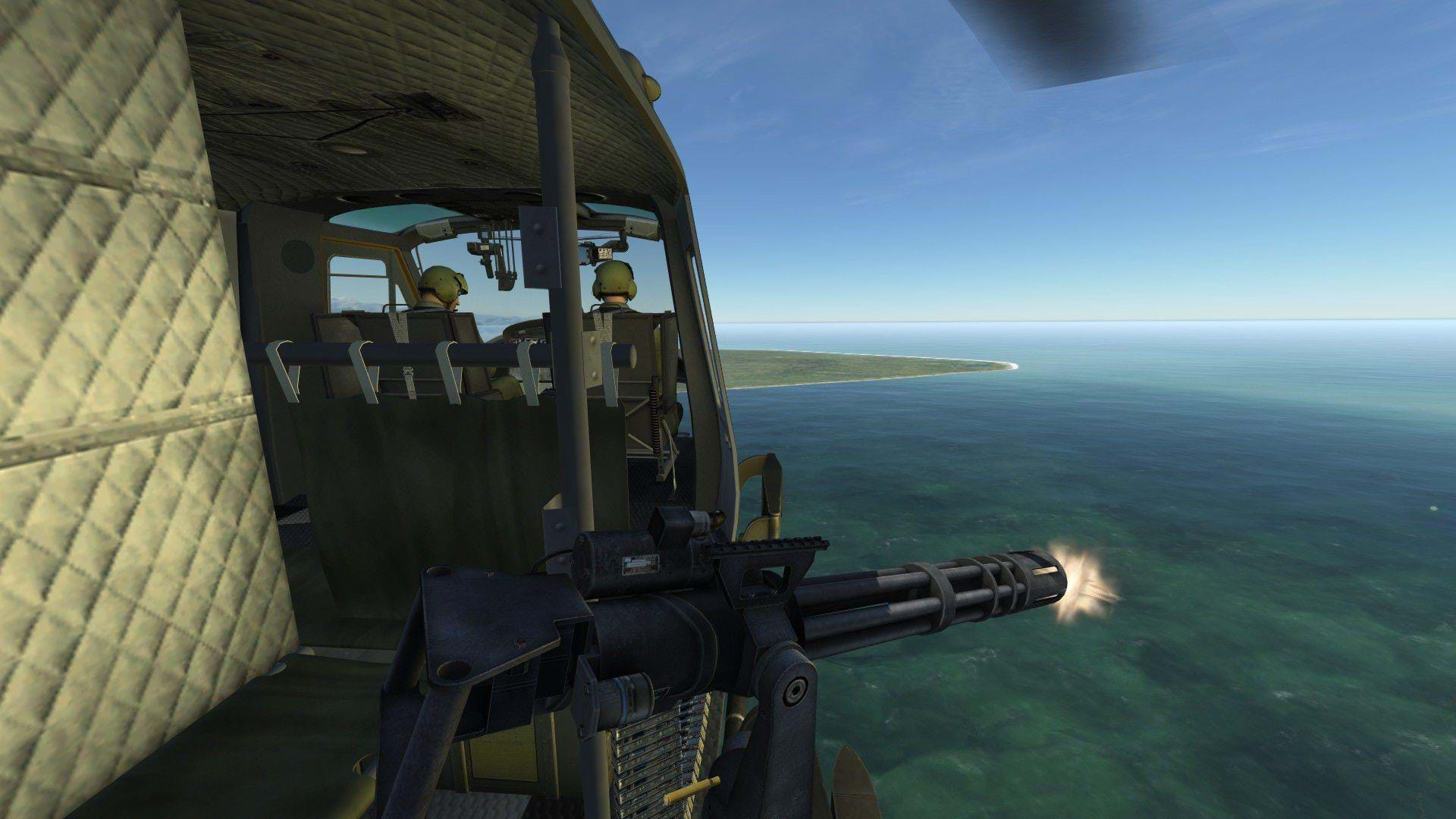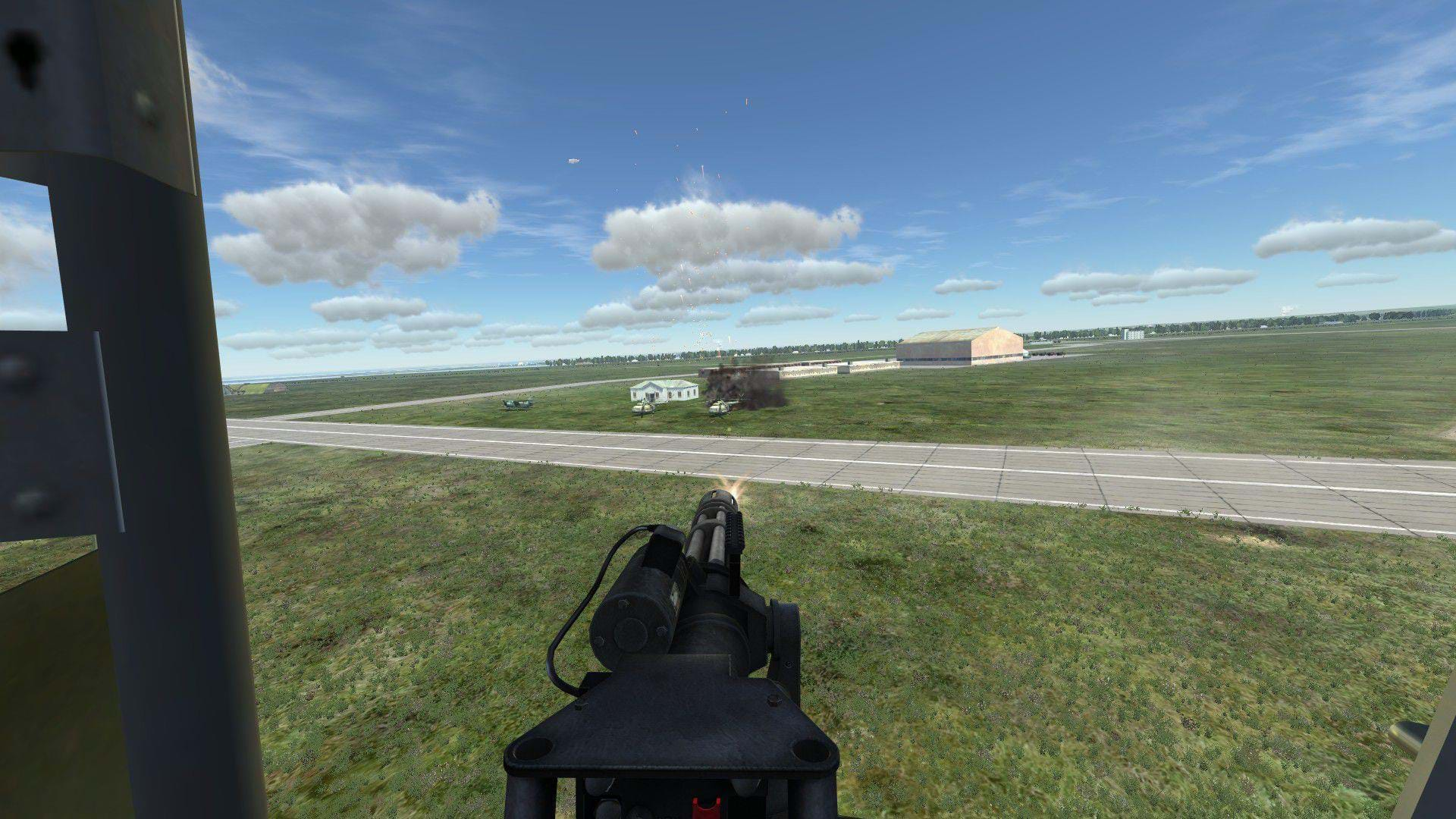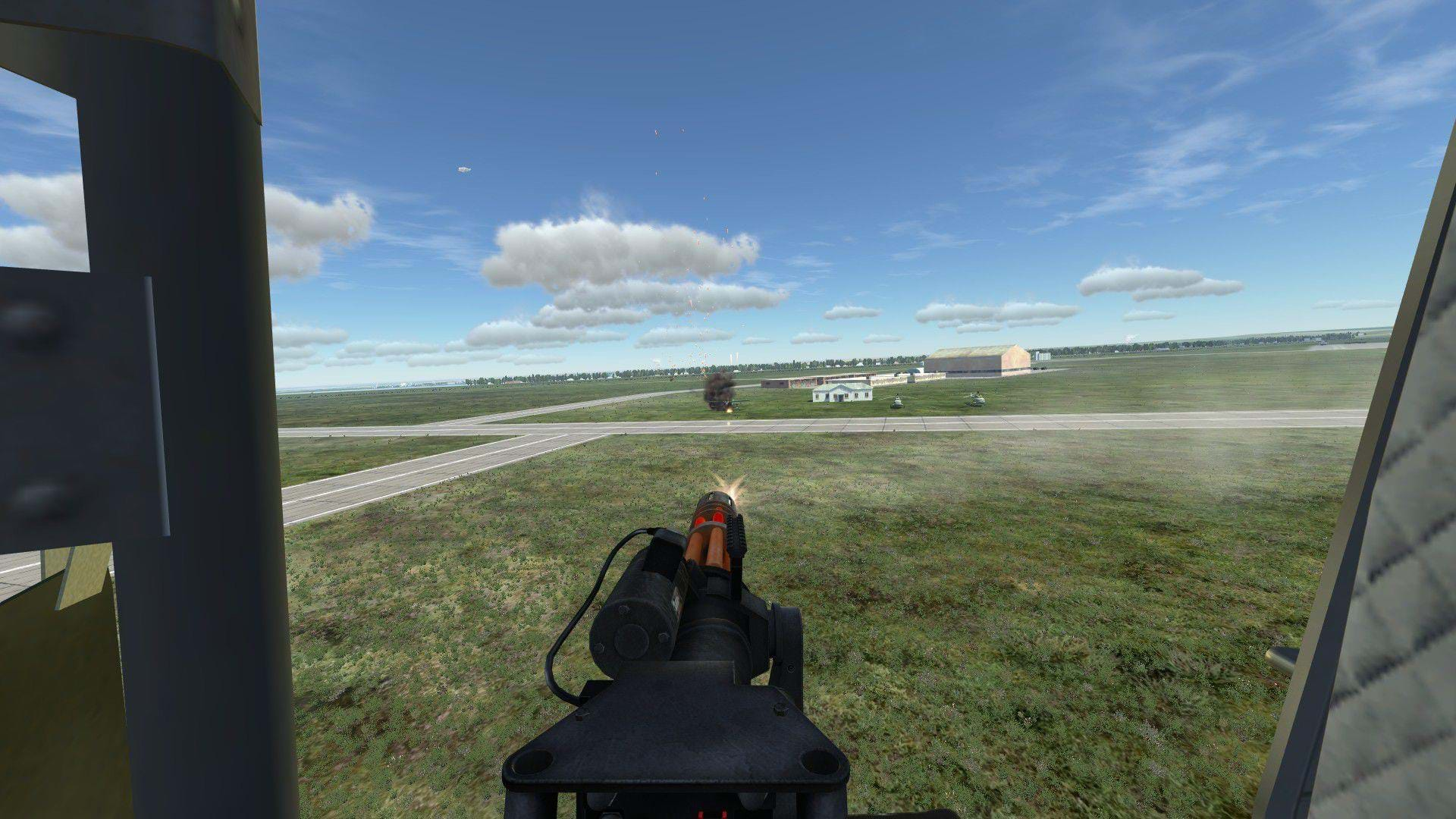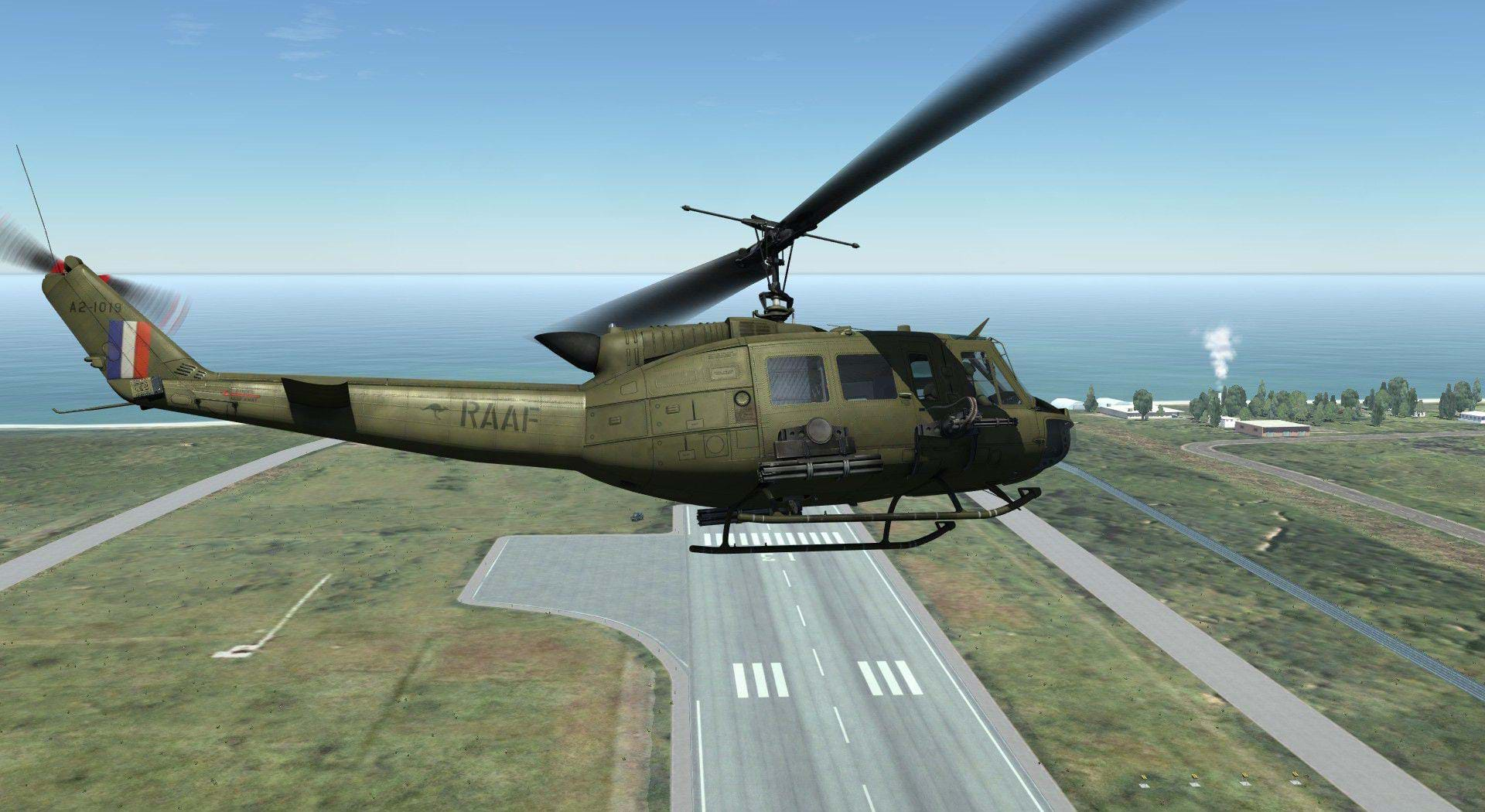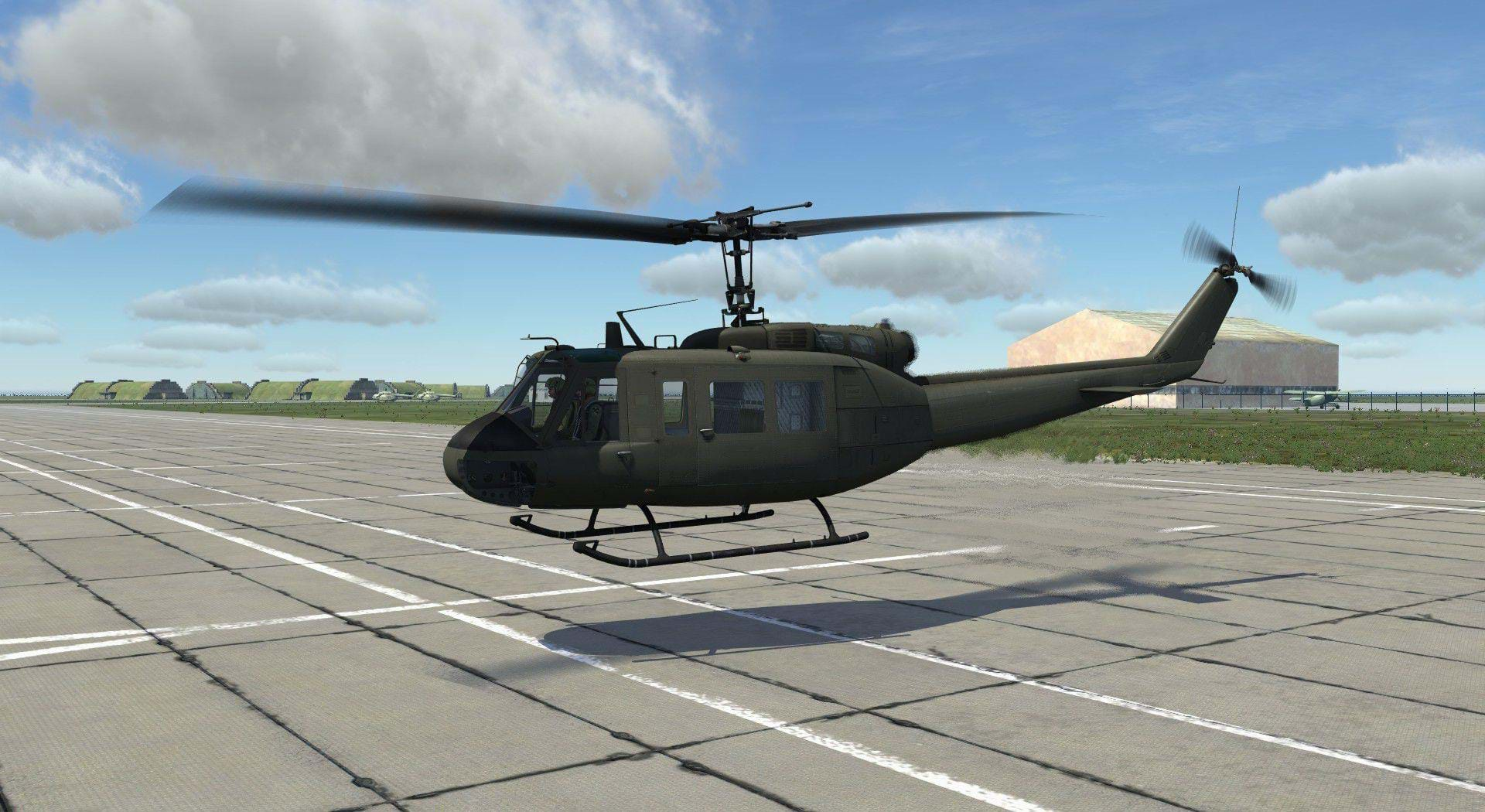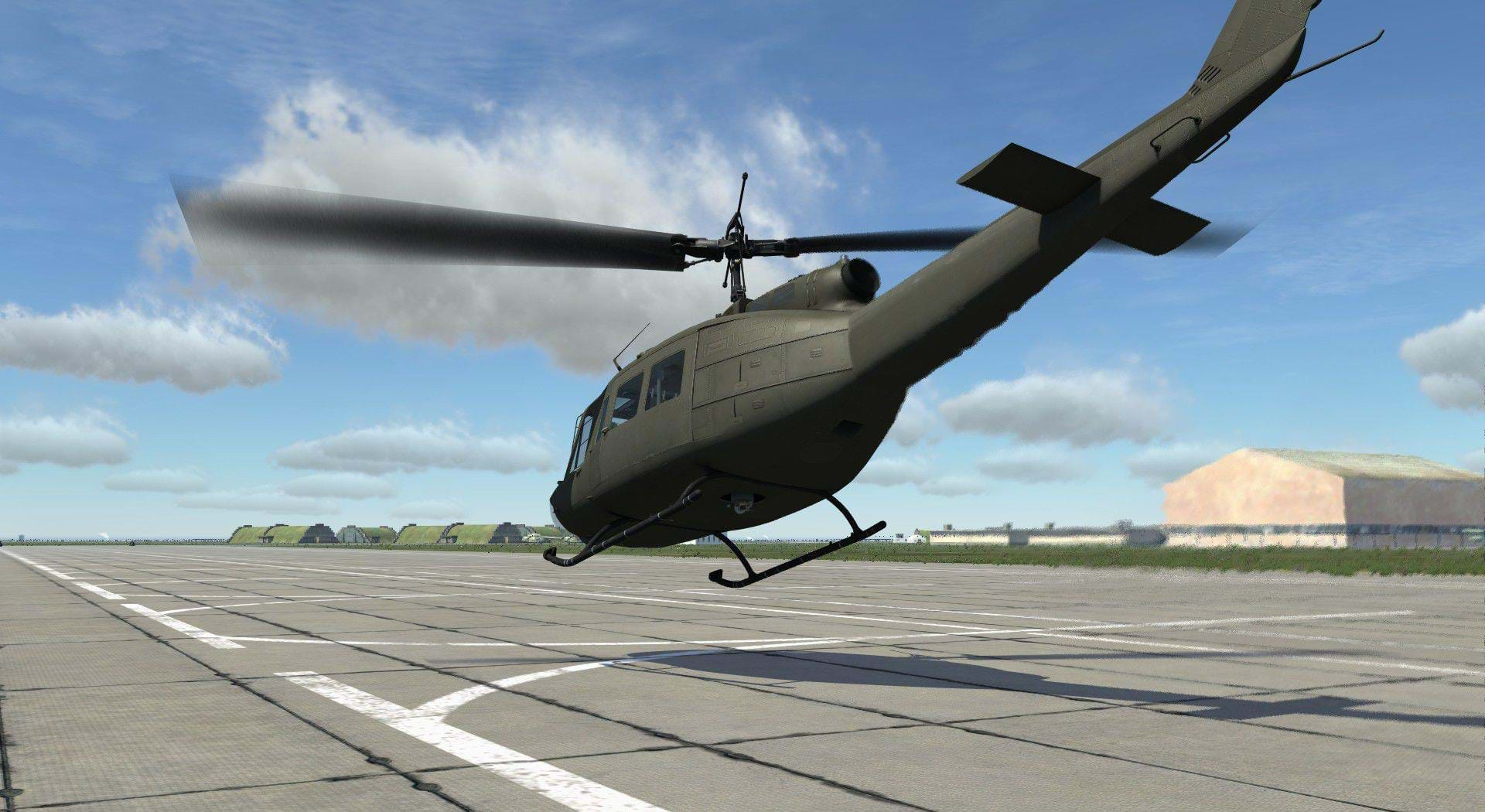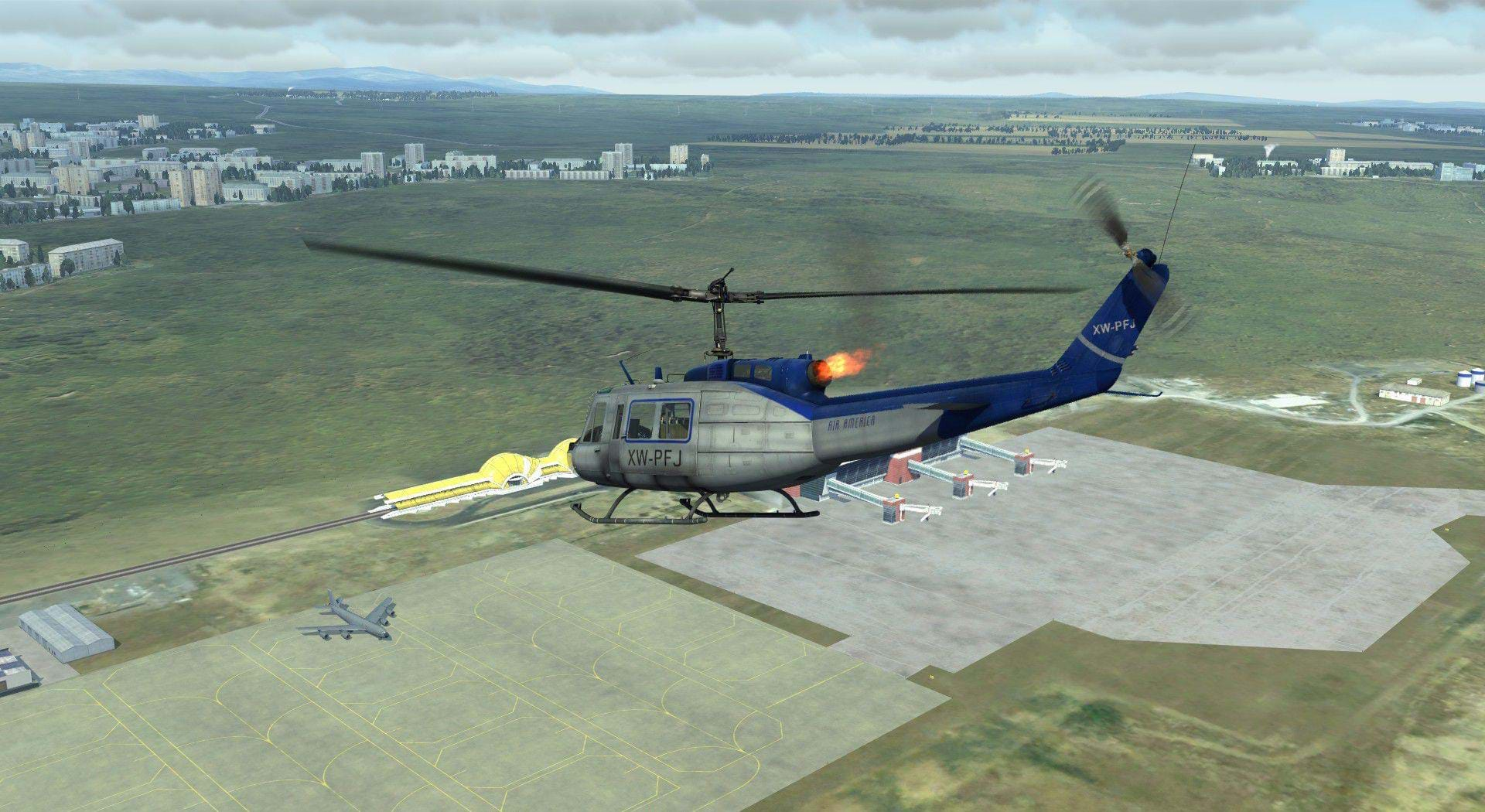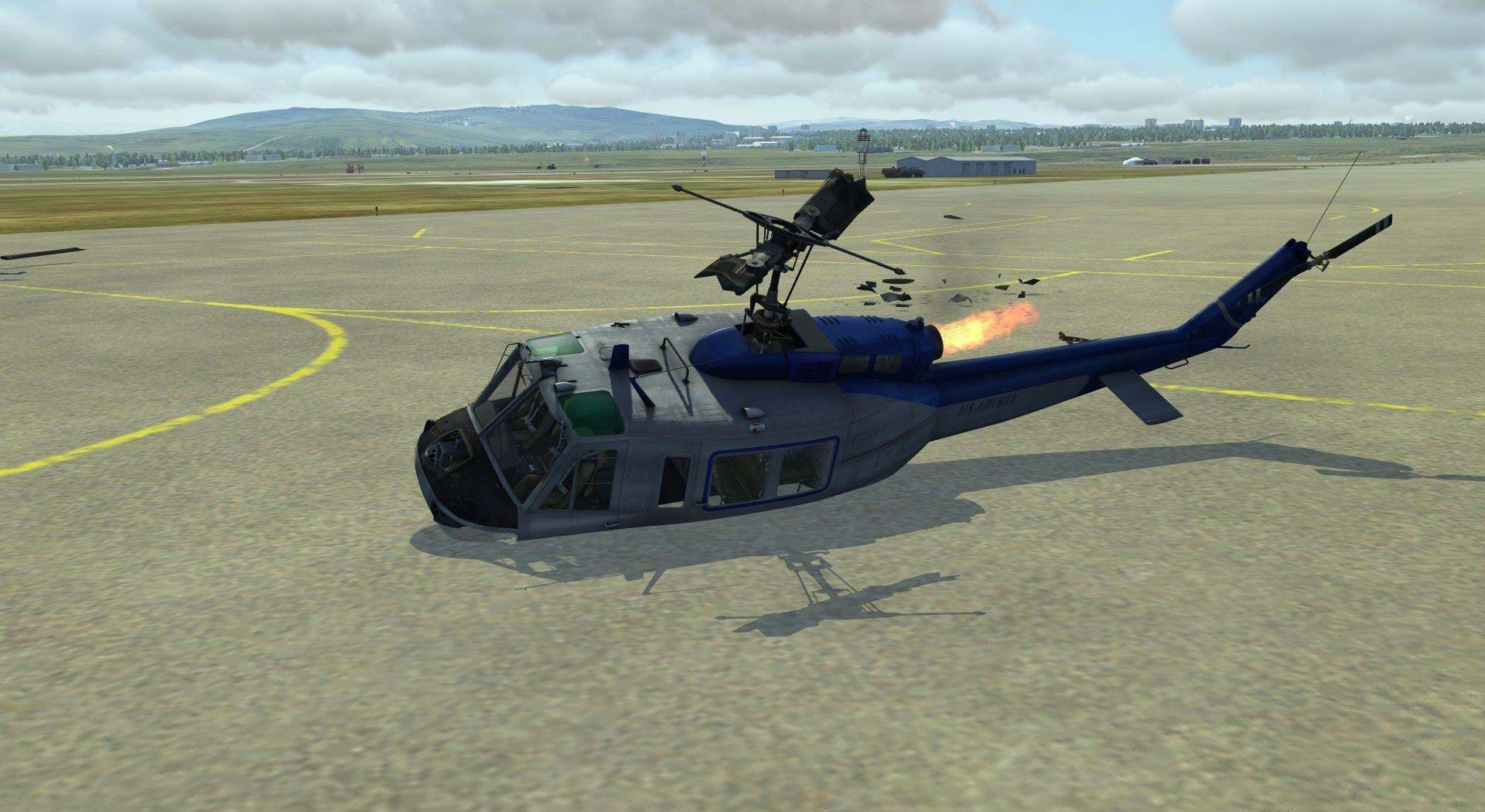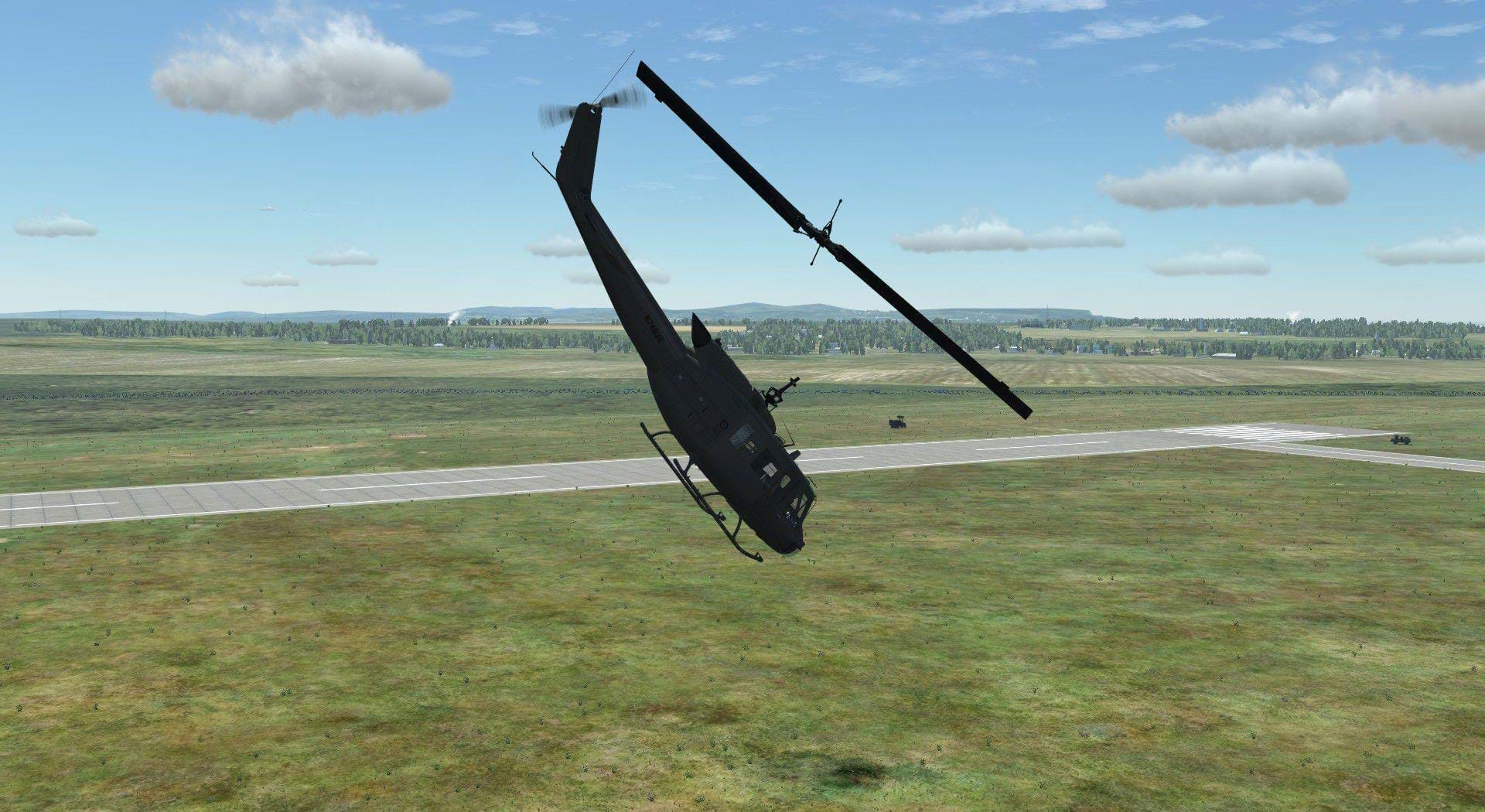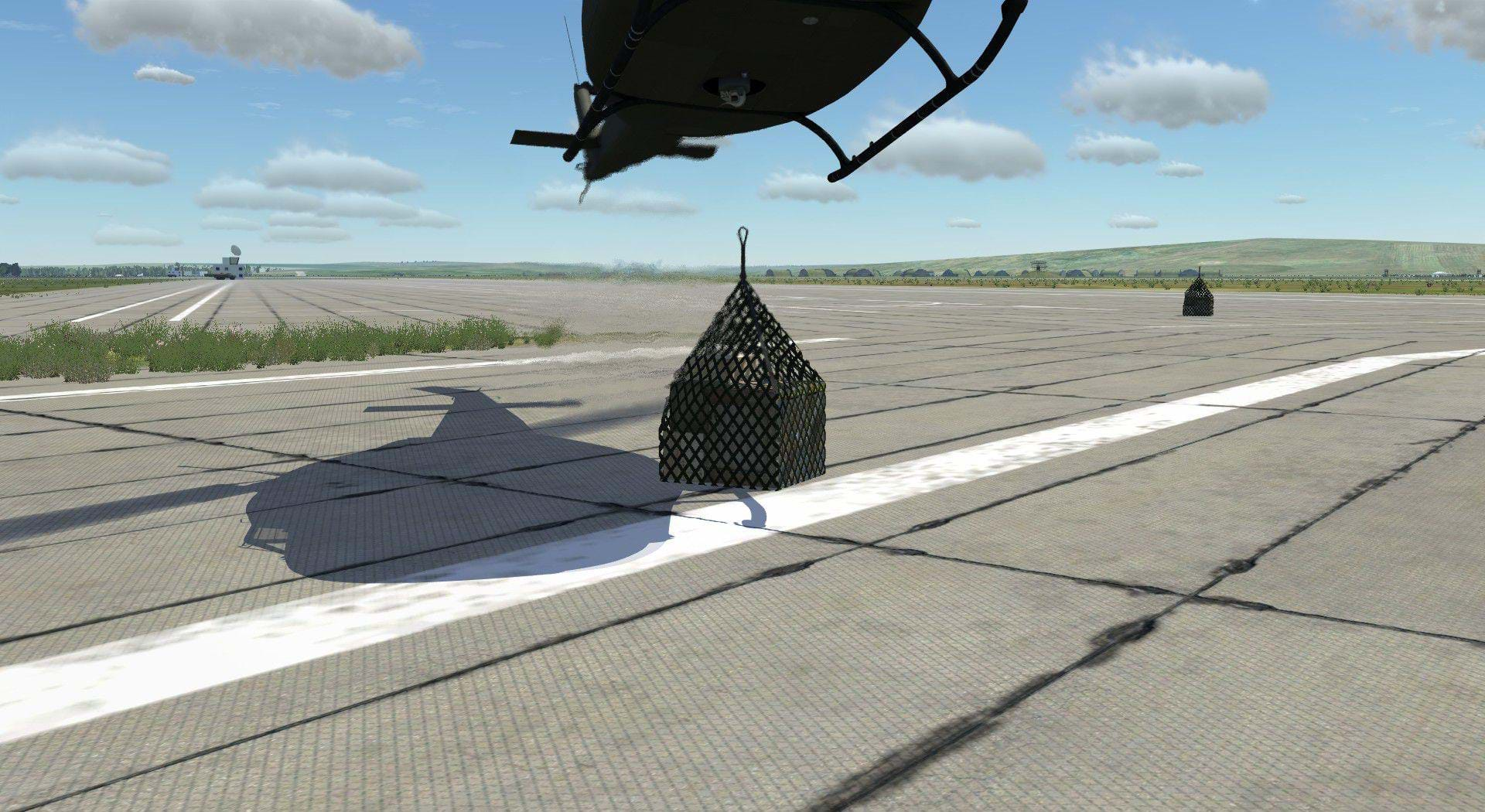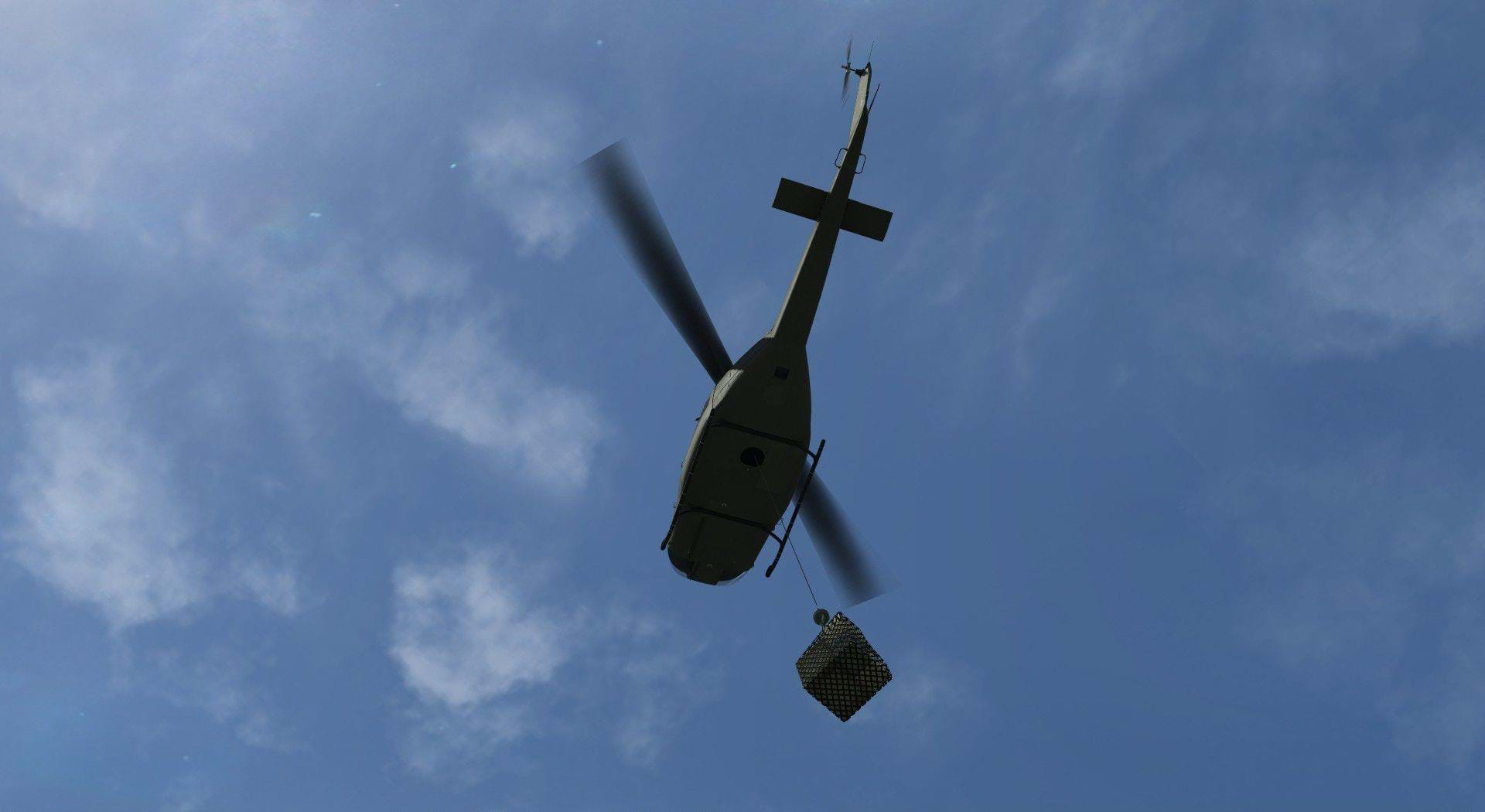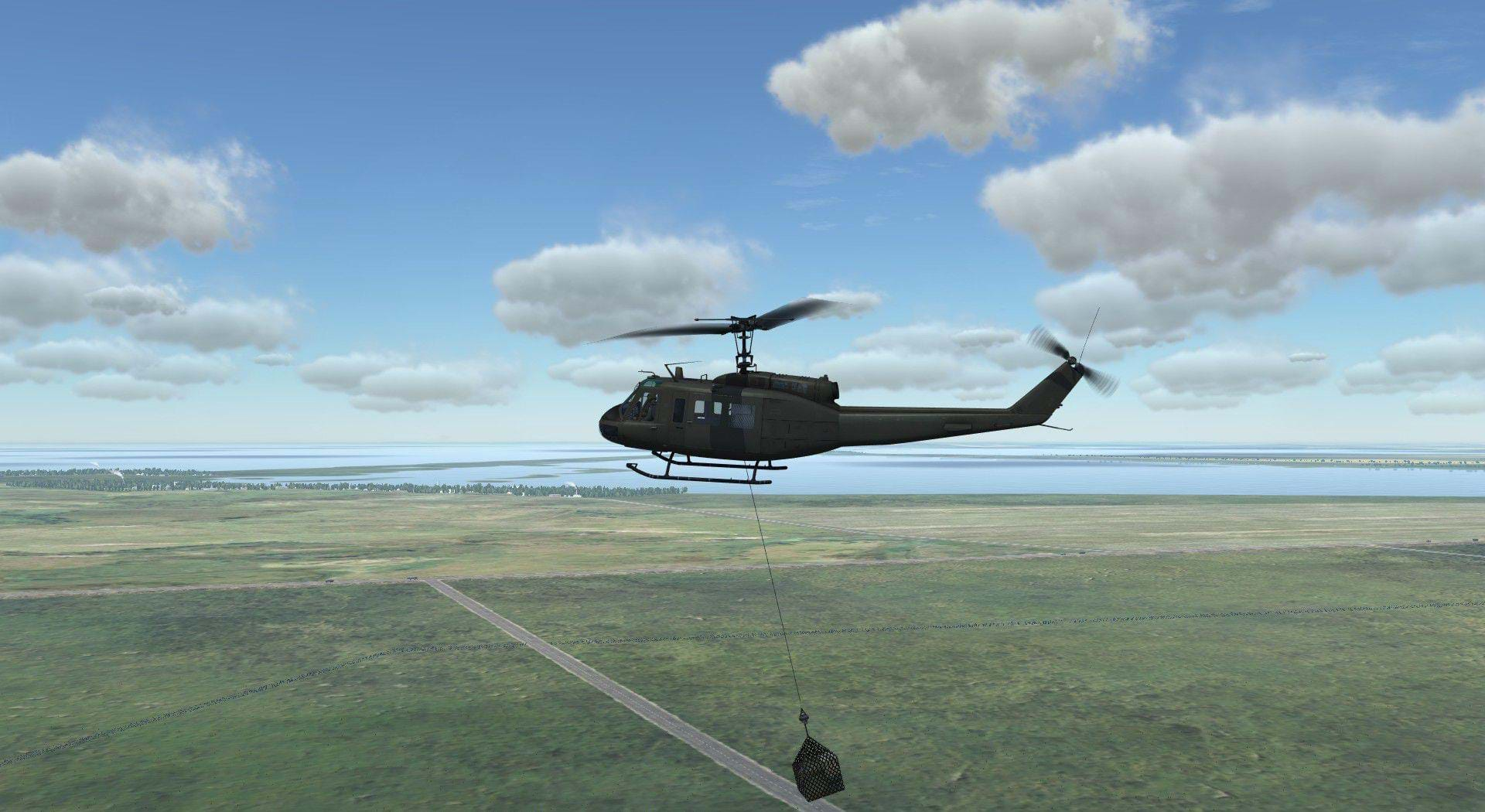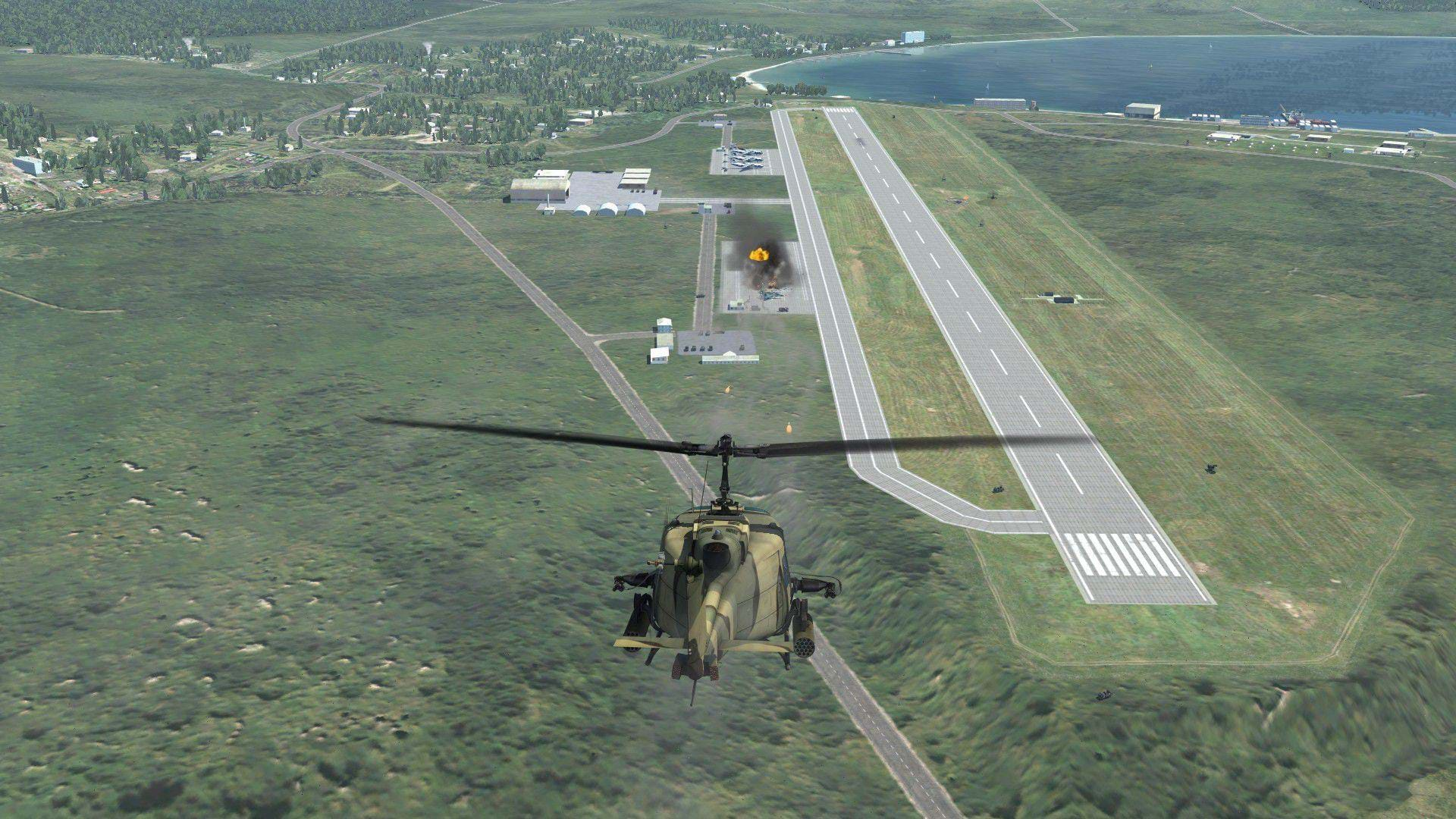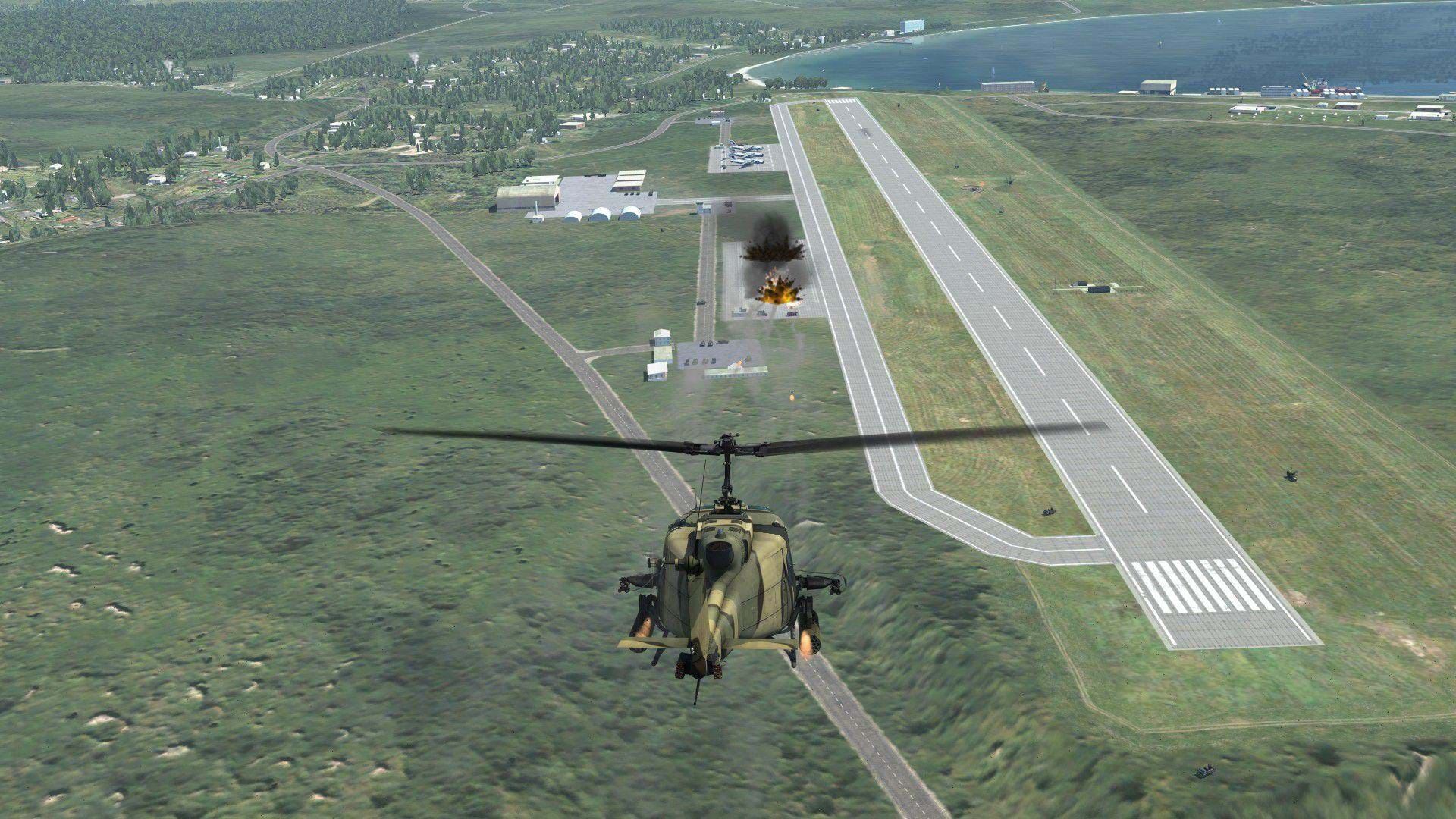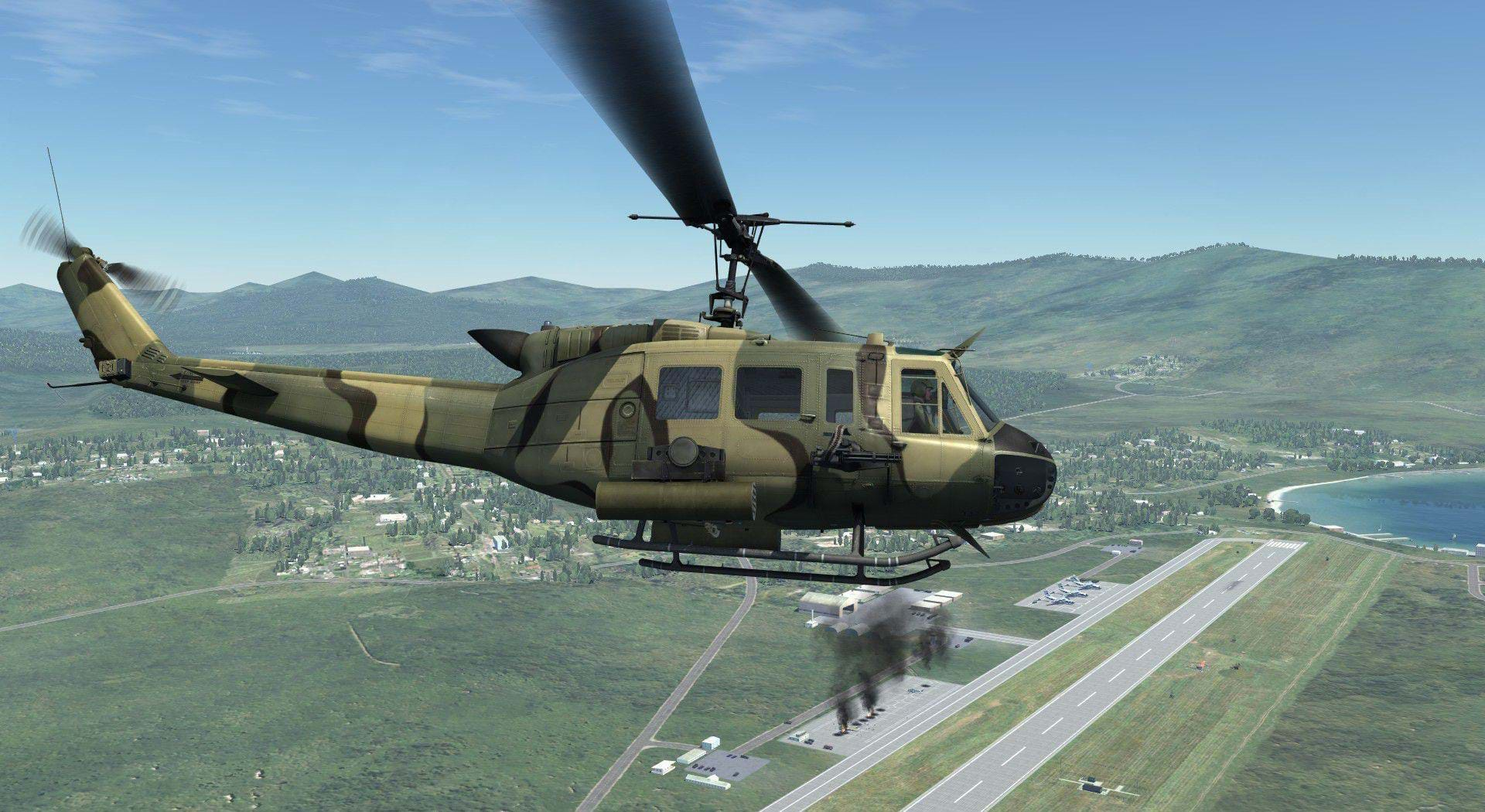or the first time in 1956, no one could have guessed it would have such a profound influence on the relatively new helicopter industry that was still trying to find its place in the future of aviation. The UH-1 and its many variants, almost single-handedly pushed the evolution of the military helicopter. Here, we will look at BelSimTek offering of the world famous UH-1H for DCS (Digital Combat Simulator).
Installation
Using the UH-1H requires that you already have the current version of DCS world, which is absolutely free to download. You’ll also need a login account which is also free to set up. The UH-1H is one of many aircraft that can be purchased that operate as a module within DCS world. Downloading DCS world is used to be the most complicated part. A recent look at the website show that seems to have been simplified to a single click down load.
After purchasing the UH-1H module from the DCS website, open DCS world on your computer and select the modules manager. From there you’ll install the UH-1H Module.
First look
BelSimTek had many UH-1 variants to choose from, however they chose to concentrate all of their efforts on the UH-1H, the last mass produced single engine Huey. Not a bad choice because the H model Huey is the variant most young pilots are familiar with, but it leads to some interesting configuration choices down the line which we’ll talk about a little later in the review.
The helicopter it’s self is beautifully modeled. BelSimTek did not go light on the details. The basic exterior aircraft model features all of the antennas, air scoops, door handles and lights. You can also chose to add the IR suppressed “toilet bowl” style exhaust, and chaff and flare dispensers to the tail boom.
The Huey's signature semi-rigid under slung rotor system with stabilizer bar are presented with wonderful detail. It’s also animated very well both at a stop and in motion. Some of the rotor animations in flight seem to be a little exaggerated, but it looks good none the less.
I’m sure a UH-1 maintainer with decades of experience might be able to find something out of place on their base model, but he or she would probably have to look pretty hard, and if they found it, I doubt it would be far off, or even that noticeable during game play.
The cockpit is another stellar example of BelSimTek's attention to detail. Virtually all of the switches are clickable, and lights show up appropriately.
The Gun sights are very well done, right down to the elevation adjustment card colors on the XM-60 rocket sight above the pilot’s seat.
Through the mission editor, you can select from 28 liveries based on the different countries represented in DCS. The United States has the most options for liveries with 12 unique choices, followed by Australia with 3 unique paint schemes. 2 sets of liveries for Spain, Georgia (the country not, the state) and Russia are available. Canada, France, Germany, Israel, Netherlands, Turkey and the Ukraine are each represented by one unique livery. Other countries are shown as available, but your only option is a plain olive drab with no markings.
Much to my delight, the DCS website has a paint kit available for users to create their own liveries, as well as downloadable liveries created by DCS users from around the world. There aren’t nearly as many available as there are for FSX, or X-plane, but enough to have fun browsing through.
Sounds
Everyone knows what a UH-1 sounds like. It’s a sound that is so recognizable, Movies and TV shows often substitute the sound of a UH-1 for any rotorcraft shown on screen, regardless of the type and model. The Sounds of the DCS UH-1H are absolutely superb, both inside and out. The rotor sounds appear to be from high quality recordings of actual aircraft.
You can clearly hear engine and rotor RPM changes with the increase and decrease in power settings. Also in limited power situations, the rotor RPM will droop. As in real life, you’ll first notice the change of sound in the rotor RPM. Then as you look to the instrument panel you’ll find the needles moving in the dual tachometer. There is also an attention grabbing low rotor RPM sound when the dual tachometer gets out of the green.
The weapon sounds are probably the weak point in the sound engineering, which is perfectly understandable. It’s really difficult to get good recordings of Mk66 rockets being fired, especially from the cockpit.
My favorite option with the sounds is the HEAR LIKE IN HELMET option from the main settings menu. I don’t think this is UH-1H module specific, but it’s a wonderful detail that, if you’re like me, helps with the sense of emersion. I usually fly my simulator with a Razor Blackshark headset. The HEAR LIKE IN HELMET option muffles the cockpit sounds to help give the illusion of hearing your environment from outside your ear cups, instead of the sounds being pumped directly into your ears.
Systems
In the interest of full disclosure, I’ve never flown the UH-1H. But, up until about 10 years ago, the U.S. Army did all of its preliminary instrument flight training in UH-1 simulators. I went though U.S. Army flight training about 12 years ago, so I was among the Last of my generation of Army Pilots to “enjoy” IFR training in the Huey simulators before they were phased out. This didn’t give me a completely accurate knowledge of the flight characteristics, but it did give me a good idea of the aircraft systems.
For those who love realistic start up sequences, BelSimTek and DCS have got you covered. The Module comes with a 188 page manual, a quick start guide, and a list of key commands all in PDF form. To the casual simmer this might seem intimidating, but it’s not as bad as you think. A good portion of the 188 page manual explains Helicopter aerodynamics as well as a basic overview of the UH-1H and its systems, including basic avionics, and armament. None of which is essential to know right away if you just want to hop in and beat the air into virtual submission.
If you would like to learn how to do the full start up procedure, There’s an interactive training mission that takes your from cold and dark to take-off. It walks you through each step, each switch, and each knob that you need to get the aircraft started and ready for departure.
The UH-1H isn’t by any means a high-tech airframe, that’s part of the beauty of it. Even though it’s a relatively simple aircraft, it’s electrical, and fuel systems seem to be represented very well. Enough to give an experienced X-plane or FSX simmer an appreciation of the modeling fidelity. Start up goes pretty much by the checklist of the actual UH-1H.
Weapon systems – part 1
The armament options on the BelSimTeks UH-1H reflect some very specific choices by the publisher. Versions of the M23 (M-60 machine gun), and XM93 (M134 mini gun) door mounted weapon subsystems are available for your AI crew or the player to use by switching seats via the view commands.
The XM93 animation is particularly impressive. From the gunner’s seat, individual rounds can be seen moving through the feed chute and empty casings are seen ejected overboard. This can also be seen in the M-60 machine guns. But what really stands out is sustained firing of the M134. This will cause the gun barrels to heat up causing them to gradually develop a red-orange glow.
The M21 weapon system is also available, which is a very uncommon configuration for the UH-1H. The United States used the D and H model Huey as transports. When the H model Huey came along during the late 1960’s, it’s increased cargo space and lifting capability was to valuable for Troops and supplies to use it as a gunship. Also, the UH-1B, C and later M models were serving well in the gunship role. Add to this the 1967 arrival of the AH-1G Cobra attack helicopter and there was little reason to convert H models into gunships.
This is where the configuration choices start to get interesting. The only country that really used the UH-1H as a gunship, in any large scale capacity was the Royal Australian Air Force. These Australian H model gunships were nicknamed “Bushrangers” and featured rocket pods, as well as the M21 weapon subsystem (forward firing M134 mini guns) mounted on the forward fuselage, independently of the rockets. The typical arrangement of the M21 and rockets that most of us are familiar with have them co-located with each other, mounted aft on the fuselage abeam the rotor mast. The Bushranger arrangement moved M21 and the ammunition boxes to the forward part of the cargo compartment. We’ll talk about the consequences of that later on in the review.
The range of rockets available is a modern selection as opposed to the types of rockets available to UH-1 crews during the height of the UH-1’s rein as a gunship. The user has the option to choose from several warheads in the MK66 family of 2.75in rockets, including High explosive, White Phosphorous, and even training rockets. The rockets are visually
Flight Dynamics
If you’re reading this, it’s very likely that this isn’t the first review of DCS UH-1H. Even if it is, it’s even more likely that you’ve already heard how realistic it is. I’m always cautious about critiquing the flight dynamics of a desktop simulator. The variables involved as well as the subjective nature will always prevent a unanimous agreement on what is considered “realistic”. DCS UH-1H is one of the programs that caused me to reconsider what I thought was a realistic desktop helicopter flight simulator.
When I first downloaded and installed DCS UH-1H last year, I was very disappointed in it. I had heard just how good it was, and had just purchased a set of Pro-flight trainer Black Lynx flight controls for my PC. To me, the flight dynamics didn’t represent the forgiving pilot friendly flight characteristics I had always heard the Huey family was famous for. Instead, it flew like a Robinson R22 on a half a tank of gas with a 2 to 3 second delay control response in gusty winds. Not necessarily unrealistic, but not a Huey. I got about half way through the campaign missions, lost interest, and then shelved the program.
A few months later, I replaced my computer with a much more powerful one, and decided to give the UH-1H another go. This made a BIG difference. Long story short, my old computer couldn’t keep up, which affected my frame rates, which affected my experience.
After the hardware upgrade, I was finally able to see, what I thought, was a beautifully modeled helicopter. Realistic is still a subjective term, but what I found in the DCS BelSimTek UH-1H, was something that felt very familiar, and natural. This gave me a sense of realism. This is one of only 3 helicopter flight models that actually made me feel like I was flying a real helicopter, not just a 3D model that responds in a way similar to a helicopter.
BelSimTeks UH-1H isn’t the overpowered Super Copter you’ll find in other simulators. If you load it up expect to see an increase in required hover power. And if you ask too much of the power train, expect to hear your rotor start to slow down, and to see a dual tachometer moving counter clockwise.
The UH-1H is a forgiving aircraft, but if you abuse it, you’ll break something. BelSimTek took this into account when they did the flight modeling. The good systems modeling come into play here as well. If you ask too much of the engine, of if it gets shot up by the enemy, expect to have to deal with some in-flight emergencies! Always be mindful of your power settings or deal with the consequences.
Vortex ring state is a phenomenon that really only existed in pricy FSX add-ons, and X-plane before the UH-1H came along. And it’s modeled pretty well for a desktop simulator. One thing that you’ll see in this flight model that I’ve never seen in any other desktop simulator is mast bumping. If you’re not familiar with mast bumping, it’s a potentially catastrophic condition were in low or negative G maneuvers, the rotor hub of a now aerodynamically unloaded semi rigid rotor system can make contact with the rotor mast. This in turn can cause the rotor mast to fail, with will result in the main rotor system departing the aircraft. In BelSimTeks UH-1H, you can do an aggressive enough low G push over to cause the main rotor to fly off the helicopter in flight. You can then watch in virtual terror as your helicopter plummets to the ground like a 7,000 pound leaf.
Another thing I like about BelSimTeks UH-1H is the ability to do sling load operations. Both FSX and X-plane 10 have the ability to do sling loads. But unless you’re on a mission, it takes some extra steps with 3rd party software and some cfg file modifications to get it to work in FSX. X-Plane 10 also requires a 3rd party plug in for sling loads.
I haven’t done vertical reference sling load flying since the early 2000’s. It was challenging then, and the flight dynamics of flying sling loads on a 50 foot, and 100 foot line brought me right back to my days as a young commercial pilot doing my best to tame the load oscillations. Precision placement of an external load from a hover is probably one of most challenging things you can do in a helicopter. DCS makes this a little easier because you can look at everything from outside the helicopter. But it’s still a challenge.
Weapon systems – part 2
Remember when I spoke about the ammunition boxed for the M21 subsystem being moved to the forward portion of the cargo compartment? Well it would appear that BelSimTek kept this in mind too! With a fully loaded gunship configured aircraft BelSimTek did a great job incorporating the center of gravity shift in the flight characteristics.
Being an Attack helicopter pilot by trade, I was very interested in the weapons systems performance of this sim, specifically the projectile ballistic modeling. Now I’ve already stated that I’ve never flown the UH-1H. But one thing I have done is fired hundreds, Mk66 rockets, and thousands of rounds of gun ammunition from helicopters over the past 12 years. One thing most combat sims miss the mark on is unguided projectile ballistics. The BelSimTek UH-1H also fails to accurately depict realistic ballistics. When it comes to shooting, it’s a very simple point and shoot type modeling. With no apparent adjustments for gravity over distance, rotor- wash effects, projectile jump, or trajectory shift.
This is most apparent when firing from the door gunner’s station. Firing a gun into the relative wind created by a moving helicopter isn’t as simple as point and shoot. It also changes based on whether you’re firing from the left or the right side of the helicopter, and also if your bullet is spinning clockwise or anti-clockwise.
One thing I did appreciate is the ricochet visualization of the 7.62 rounds that hit the ground when fired from the aircraft. This effect dissipates and it would in real life if the bullets hit the ground at a steeper angle. At shallower angles, you can see more of your tracer rounds bounce off the ground and fly back into the air. It’s a nice touch that is exciting to watch.
Firing unguided folding fin aerial rockets presents another set of considerations, such as the spin of the rocket, winds, Range and aircraft trim. My first impression of the Rocket ballistics was a bit disappointing. I thought it was a little too simple and easy. But some focused testing showed that BelSimTek did put some effort into recreating the flight characteristics of the MK66.
For my test I focused on the 151 warhead, as it’s the most commonly used for Army helicopters in the US. I set targets at 2, 4, and 6 kilometers and used various wind directions. Rockets didn’t perform exactly as they would have in real life but it was better than I expected. But the flight path of the rockets did show that the programmers made a good effort to account for these variables, especially crosswinds, and firing at targets at longer ranges.
Having said all of that, please don’t let that seemingly over critical review of the weapons ballistics lead you to think I don’t like it. Firing the rockets and guns in UH-1H is my absolute favorite part! Now, would I use it to train proper firing techniques? No, absolutely not. But will I keep myself entertained for hours every weekend blasting away at unsuspecting enemy convoys, airfields and troop positions? You bet I will!

